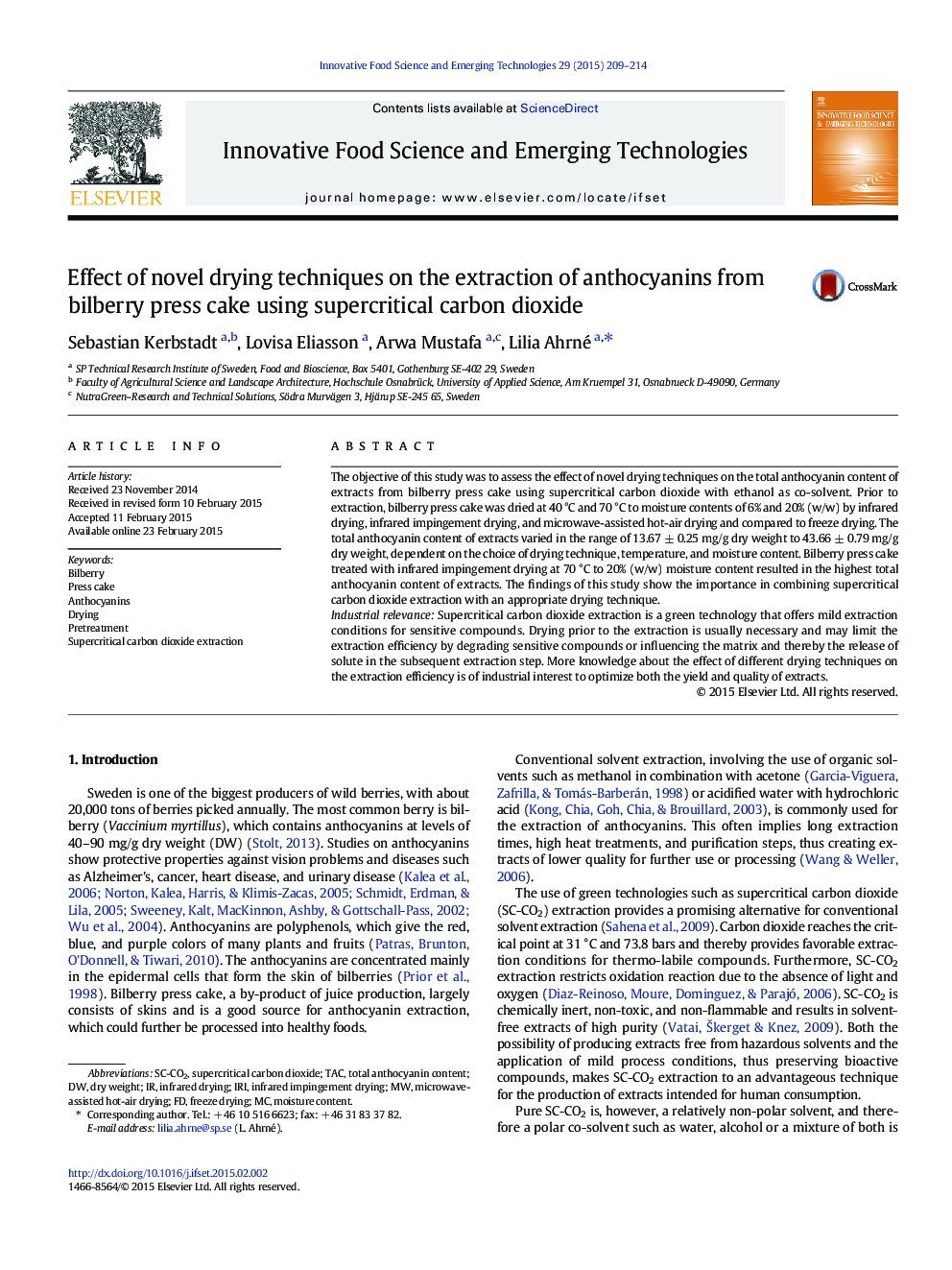| کد مقاله | کد نشریه | سال انتشار | مقاله انگلیسی | نسخه تمام متن |
|---|---|---|---|---|
| 2086481 | 1545537 | 2015 | 6 صفحه PDF | دانلود رایگان |
• Drying prior to SC-CO2 extraction affects the total anthocyanin content (TAC) of bilberry extracts.
• The shorter the drying process, the higher the amount of TAC extracted.
• Twenty percent (w/w) moisture in the bilberry press cake results in higher TAC of extracts than 6% (w/w) moisture content.
• Drying at 70 °C resulted in higher TAC of extracts compared to the drying at 40 °C.
• The drying pretreatment needs to be tailored to ensure higher TAC.
The objective of this study was to assess the effect of novel drying techniques on the total anthocyanin content of extracts from bilberry press cake using supercritical carbon dioxide with ethanol as co-solvent. Prior to extraction, bilberry press cake was dried at 40 °C and 70 °C to moisture contents of 6% and 20% (w/w) by infrared drying, infrared impingement drying, and microwave-assisted hot-air drying and compared to freeze drying. The total anthocyanin content of extracts varied in the range of 13.67 ± 0.25 mg/g dry weight to 43.66 ± 0.79 mg/g dry weight, dependent on the choice of drying technique, temperature, and moisture content. Bilberry press cake treated with infrared impingement drying at 70 °C to 20% (w/w) moisture content resulted in the highest total anthocyanin content of extracts. The findings of this study show the importance in combining supercritical carbon dioxide extraction with an appropriate drying technique.Industrial relevanceSupercritical carbon dioxide extraction is a green technology that offers mild extraction conditions for sensitive compounds. Drying prior to the extraction is usually necessary and may limit the extraction efficiency by degrading sensitive compounds or influencing the matrix and thereby the release of solute in the subsequent extraction step. More knowledge about the effect of different drying techniques on the extraction efficiency is of industrial interest to optimize both the yield and quality of extracts.
Journal: Innovative Food Science & Emerging Technologies - Volume 29, May 2015, Pages 209–214
